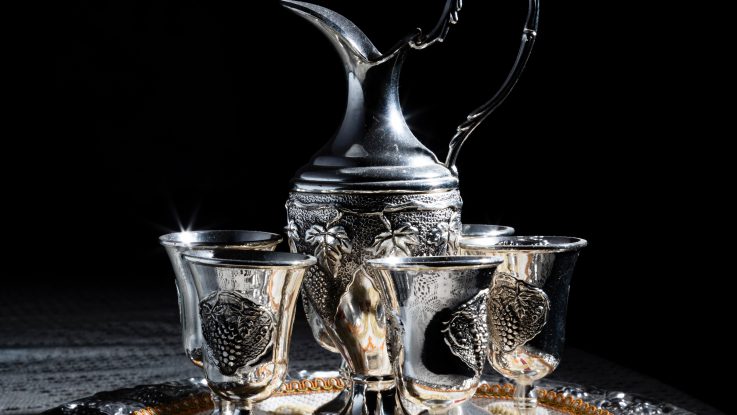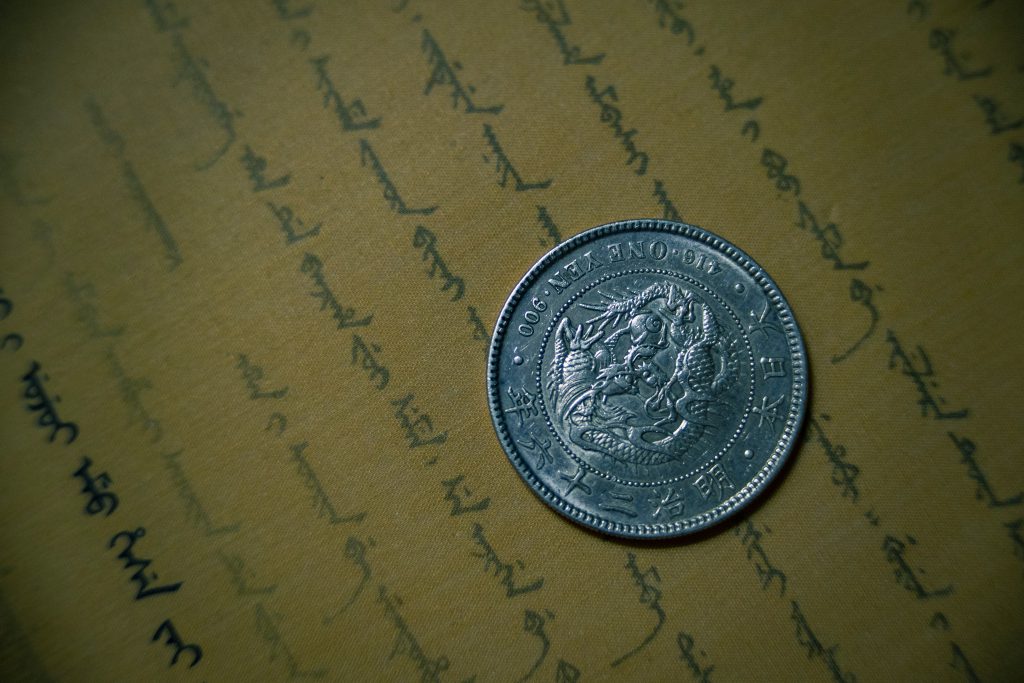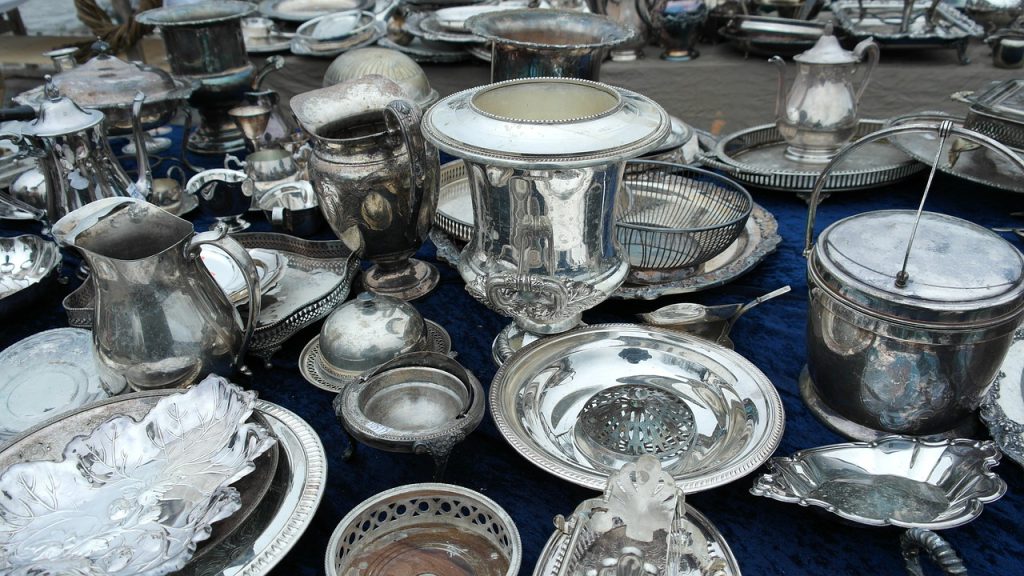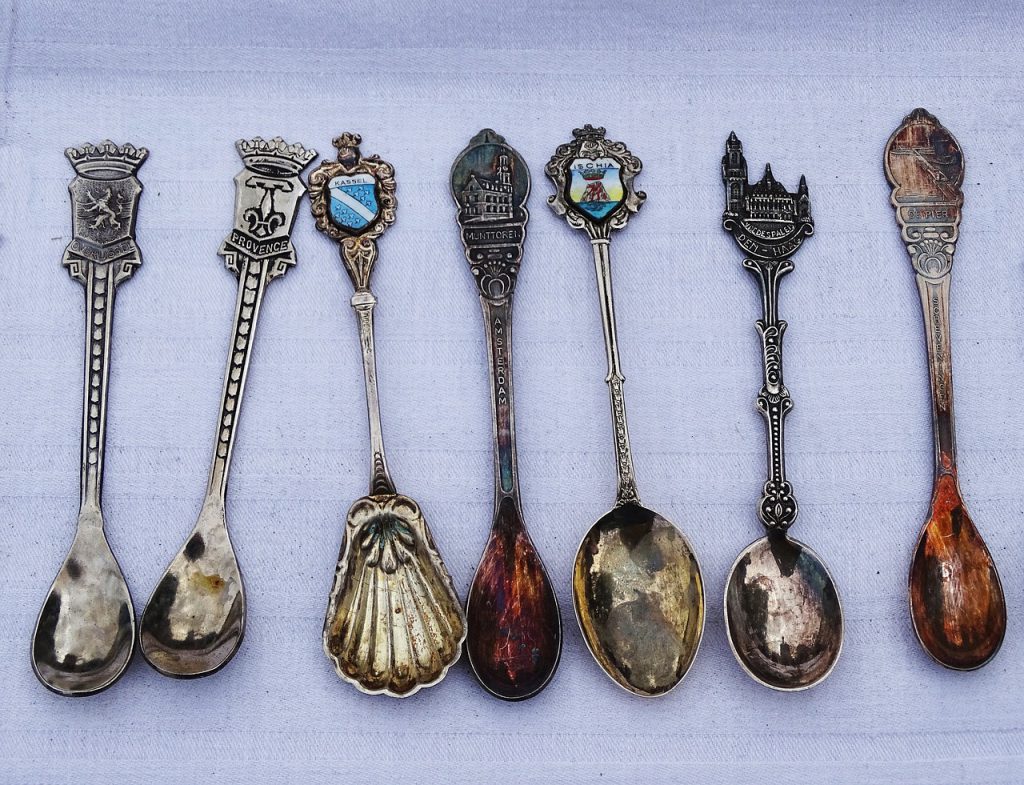
Antique silver is much more than a decoration gracing your grandma’s cabinet. A better way to look at it is as a time machine that could take you back to different eras, revealing the incredible stories of our collective past.
In this article, we’ll discuss antique silver and explore its various forms and functions, from the grandeur of silver tea sets to the elegance of silver jewelry. We’ll also unveil the secrets of silver’s impact on different cultures over the centuries.
By the time you’re done reading, you’ll be a pro at identifying antique silver. So, let’s dive right in.
What Qualifies Antique Silver?
Any silver piece older than 100 years is considered antique silver.
Antique silver items can be all sorts of cool stuff, from elegant tableware and exquisite jewelry to stunning decorative objects. And all those silver pieces are highly sought by collectors and antique dealers who appreciate their historical and aesthetic value.
Silver’s History

Since 3000 BC, people have been mining and using silver for many purposes. Early civilizations like the Greeks, Egyptians, and Romans recognized silver’s beauty and rarity, so they used it for everything from currency to religious objects.
As time went on, silver’s uses expanded beyond practicality and into the realm of decoration. In the Middle Ages, skilled silversmiths created intricate designs and patterns, making silver a staple in religious and ceremonial items.
During the Renaissance, wealthy patrons were commissioning famous Italian silversmiths like Benvenuto Cellini and Andrea Palladio to create stunning silver pieces displayed in museums today.
Fast forward to the Industrial Revolution, and silver’s production and use underwent significant changes. New mining and refining techniques made it easier to produce silver at large, and mass production made it more affordable for everyday people to use silver objects. Mass production also paved the way for the use of silver in a wide range of industrial applications, like photographic film and electrical wiring.
And what about today? Well, silver remains just as popular and versatile as ever! It continues to dazzle us with its beauty and practicality, from jewelry and decorative objects to modern-day industrial applications like solar panels and electronics.
Silver and Medicine
It’s amazing to think that something as beautiful as antique silver also has such powerful medical properties.
Yet, people relied on its antimicrobial properties for centuries to keep wounds clean and prevent infections. Before we had modern antibiotics, silver was the original antibiotic. One fascinating example is “Credé’s prophylaxis,” which involved using silver nitrate to treat eye infections in newborns.
And it wasn’t just for medicine either. For example, people used silver to prevent bacterial growth in water by placing silver coins in containers or using silver vessels to transport and store water for consumption.
How to Recognize Antique Silver?

Let’s dive into the key features you should look for when searching for antique silver.
First up, the hallmark symbol on silver items – it’s like an ID card for silver. You’ll find a series of characters and numbers stamped onto the silver, providing information about the maker, production date, and purity. But beware, each country has its unique set of hallmarks, so get ready to research silver symbols.
Next, check the purity of the silver. Genuine antique silver is typically made from sterling silver, a combination of 92.5% pure silver and 7.5% other metals, usually copper. Look for the “925” mark on the piece to know you’re dealing with sterling silver.
Weight matters too! Antique silver is usually heavier than modern silver pieces because it was made from thicker, higher-quality silver. So always remember to weigh the piece when determining its authenticity and value.
Antique silver develops a unique patina over time, a thin layer of tarnish that forms on the surface of the silver. This patina is a natural effect of the aging process and a good indicator of the age and authenticity of the piece. Conversely, a piece with a uniform patina may signify that it has been well-maintained over the years.
The design and style of an antique silver piece can also provide valuable clues. Antique silver pieces often feature intricate designs and patterns, such as floral or geometric motifs. The style and shape of the piece can also provide information about its production era.
For example, the Art Nouveau period (1890-1910) featured silver pieces adorned with curving, organic lines that mimic nature’s shapes. Think flowers, plants, and other organic motifs that bring the touch of the outdoors to your home decor.
Of course, the condition of the antique silver is also crucial in identifying its validity. While some signs of wear and tear are expected with age, excessive damage or repairs may be a sign the piece is not genuine antique silver.
Last but not least, dig into the provenance of the piece. Look for documentation that traces the piece’s ownership history, including receipts, appraisals, or letters of authenticity. Knowing the piece’s history is a great way to guarantee its validity.
The Most Common Antique Silver Items

When it comes to tableware, the most common antique silver pieces include silverware sets, tea sets, and serving trays. They were often adorned with elaborate designs and patterns, such as floral or animal motifs, and may feature personalized engravings.
Moving on to antique silver jewelry, this category includes rings, necklaces, bracelets, and earrings featuring detailed designs and settings. Victorian-era silver jewelry is particularly popular, with its romantic motifs such as hearts, flowers, and stars. Art Deco and Art Nouveau styles are also highly coveted, featuring bold designs with geometric patterns.
Antique silver decorative objects come in various styles, from elegant candlesticks to ornate picture frames. These items often feature intricate details such as filigree work, chasing, and repoussé, showcasing the craftsmanship of their creators.
Finally, antique silver household items such as inkwells, snuff boxes, and cigarette cases were designed to be both functional and stylish for wealthy individuals. Often they’re adorned with elaborate designs or engravings and add a touch of sophistication to any space.
Antique Silver’s Prices

Hold onto your hats because prices vary like crazy.
Let’s say you have an eye on an antique silver tea set. You could shell out a few hundred to several thousand dollars for a well-preserved set from a famous craftsman. And if you’re looking to make a statement with some antique silver jewelry, be prepared to spend even tens of thousands of dollars depending on the design and material used.
Antique silver decorative objects, such as candlesticks and picture frames, range from a few hundred to thousands of dollars, depending on how big and fancy they are. And if you are searching for antique silver household items, like an inkwell or snuff box, be ready for prices all over the map depending on the rarity and condition of the pieces.
Differences Between Silver Types

First, we have pure silver, also known as fine silver. It’s a naturally occurring metal used for centuries to make beautiful and functional objects, such as jewelry or tableware. However, pure silver is a bit of a diva – it’s soft and can easily scratch or dent. So, to make it more durable, it’s often mixed with other metals like copper or nickel, creating a more rigid and studier material.
Next, we have plated silver, which is essentially a thin layer of silver applied to a base metal, usually copper or brass. Plated silver objects are much more affordable than their pure and sterling silver counterparts and can be found in decorative items such as vases, picture frames, and candlesticks. But the silver layer can wear out over time, so be careful when cleaning and handling these objects.
Finally, we have sterling silver, which is a silver alloy made of 92.5% and 7.5% other metals, like copper or nickel. Sterling silver is the go-to material for creating functional objects such as tableware, jewelry, and utensils. It’s tougher than pure silver, making it perfect for everyday use. You can quickly identify sterling silver by the “925” hallmark stamped on it.
So, what’s the difference between these three types of silver?
First off, their composition varies. Pure silver is the softest and most malleable. Sterling silver is harder and more durable, while plated silver is a layer of silver on top of base metal.
In terms of value, sterling silver objects are generally more valuable than plated silver objects due to the higher percentage of silver and durability. Another reason for the sterling’s higher price is the high-quality material used for functional objects.
They also differ regarding maintenance. For example, pure and sterling silver can tarnish over time and require regular polishing to maintain shine. Plated silver, however, is delicate and should be handled carefully to avoid wearing out the silver layer.
Conclusion
In a nutshell, antique silver isn’t just some fancy decoration – it’s a precious piece of history that’s stood the test of time! Antique silver is the real deal, from shaping art and fashion to influencing society across cultures and centuries.
By diving deeper into the world of antique silver, you can also develop a super cool skillset to identify and differentiate between different types of silver. From checking out the hallmark stamps to understanding the various silver alloys, you can learn to spot antique silver from a mile away.
With this knowledge, you can confidently buy, sell, or appreciate antique silver pieces like a pro.

Leave a Reply